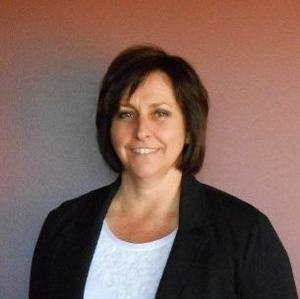How Much Does It Cost? Addressing Price Transparency
// By Althea Fung //
 Health care is in the midst of a shift toward a consumer-centric model — empowering patients to have a greater role in how their health care dollars are spent. But there’s a problem. It’s hard to shop around if no one can tell you how much services cost.
Health care is in the midst of a shift toward a consumer-centric model — empowering patients to have a greater role in how their health care dollars are spent. But there’s a problem. It’s hard to shop around if no one can tell you how much services cost.
A 2017 price transparency study published in the journal Hospital Pediatrics found 30 out of 45 pediatric hospitals contacted provided price estimates. Only 12 of the 30 that provided estimates had online price calculators.

Kathy Delis, administrative director of revenue cycle support, University of Utah Health
A new price transparency guideline from the Centers for Medicare and Medicaid Services (CMS), which went into effect in January, is aimed at addressing the opaque nature of health care pricing. Hospitals are now required to publish a standard list of prices online in a machine-readable format for patients. University of Utah Health, a four-hospital, Salt Lake City-based system, took the requirement a step farther and implemented a comprehensive cost estimator tool for about 500 common services and procedures, giving a single price that includes the full scope of costs.
“A few years ago, our senior leaders asked the question, ‘How would we respond if asked to publish our prices online?’ We formed a system-wide team consisting of hospital billing, physician billing, marketing, and clinical leaders to answer that question,” says Kathy Delis, administrative director of revenue cycle support at University of Utah Health. “We started going down the path of looking into how we can provide that information for both our existing patients and also consumers who are just shopping.”
In 2016, three years before the guidelines went into effect, University of Utah Health began posting the out-of-pocket expenses on its website. “I’m thankful we went down this path; we don’t just publish our CDM (charge description master), we have a tool that provides a meaningful estimate,” she says.
In addition to providing a downloadable spreadsheet that details standard charges for services ranging from vanilla-flavored nutritional supplements to LVAD kits, University of Utah Health offers an interactive, cost estimator tool. What sets the cost estimator tool apart from the CDM is that instead of telling users the list price the hospital has set for an item or service, it details how much a patient would pay out-of-pocket.
The tool also gives an estimate based on the total cost of service, not just the hospital fees. So users interested in learning the cost of a procedure get an estimate that includes the hospital, physician, radiology and lab, and anesthesia fees. Pricing data is out-of-pocket expenses for those with Medicare, Medicaid, and an aggregate of prices for private insurance.
For more specific pricing, users enrolled in the patient portal, MyChart, can get estimates for out-of-pocket expenses based on their insurance plan. Patients who want to find prices offline can call their financial advocate team.
Uninsured or self-pay users receive estimates with an automatic 30 percent discount on the cost; University of Utah Health offers this discount as its “contribution to your care,” supporting unfunded patients.
A Culture of Transparency
The cost estimator tool is just one facet of the University of Utah Health’s mission to be more transparent. It was the first in the nation to calculate exactly how much services cost per minute. According to a 2015 New York Times article, officials at the health system determined it costs 82 cents per minute for emergency department services and $12 per minute in an operating suite for an orthopedic surgery case. Tracking costs have led to savings of 0.5 percent in one year. The University also launched the Value of Health Care Survey in 2017, which examines how patients, providers, and employers perceive the quality and costs of health care services.
“At the University of Utah, we are progressive when it comes to transparency. We believe it’s important for consumers to know what it’s going to cost. We started this journey to be patient-friendly, consumer-friendly, and provide patients information to make educated decisions,” Delis says.
Refining the System
To create the tool, the finance department worked with the marketing team to design a consumer-friendly site. The data services team provided pricing data. Throughout the process, they worked with consumer groups to ensure the tool was easy to use and provided quality information. Just before the guidelines went into effect, the team added more than 400 procedures to the tool to offer patients a more robust experience.
Since January 1, Delis says that use of the tool has tripled. As more people use the pricing tool, University of Utah Health is collecting session data to refine the tool. Delis says the team is analyzing data from the tool to determine how accurate the information is and if it is impacting patients’ decisions to receive care at their facilities.
Long Road to Comparison Shopping
Although posting a chargemaster or cost estimator is a step toward transparency, the industry is a long way from offering patients the opportunity to comparison-shop as you can when buying a car.
“Most hospitals just published their CDM as the CMS rule required. You can’t really do a comparison. For example, if you want to look at a colonoscopy charge on our CDM and look at another hospital, there are many different colonoscopy procedures to choose from. The published CDM doesn’t include all the charges, such as the physician fee, labs, etc.,” she says. “Just looking at the CDM doesn’t get you to what your cost will be.”
The journal Hospital Pediatrics study also found that because of the different approaches to calculation, cost estimator tools yielded prices ranging from $1,200 to $15,360 for tonsillectomy and adenoidectomy, making it difficult for consumers to compare estimates.
Delis says having a single nomenclature is one way to being transparent throughout the industry. “It’s hard to navigate the waters when it comes to medical terminology. It would be great if across the country we had standard terms making it more understandable,” Delis says.
In an industry filled with jargon and acronyms, consumers may struggle with finding accurate information. Delis says University of Utah Health uses consumer-friendly terms wherever possible, but for patients who want to attempt to comparison-shop, they might run into trouble as services may be named differently at different institutions.
Althea A. Fung is a digital content strategist and healthcare journalist. Reach her at fungus@altheafung.com.
